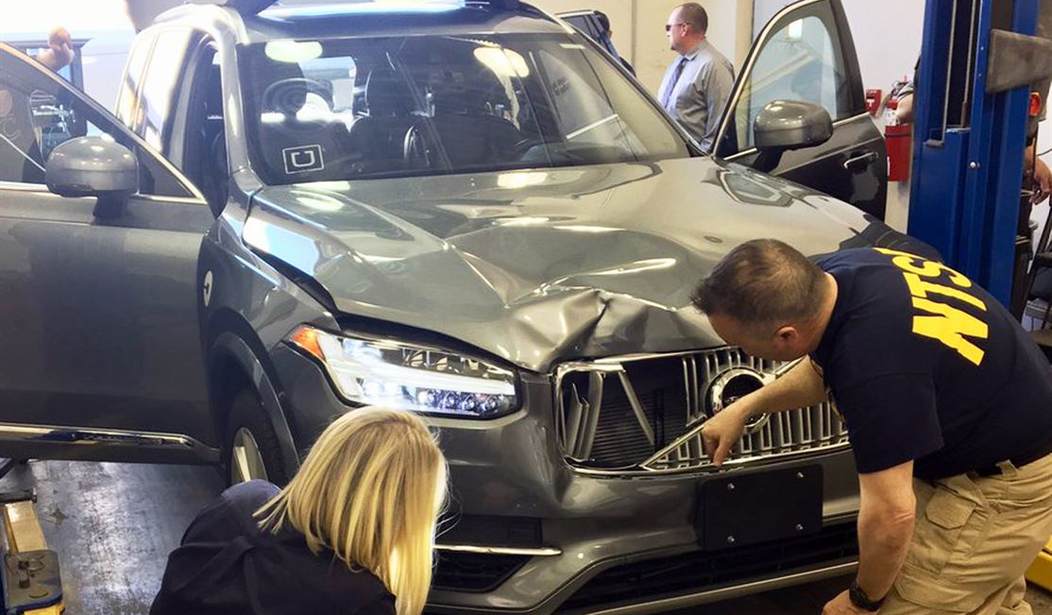There's an epidemic of pedestrian deaths in America. In 2022, 7,805 pedestrians were killed by cars. "That’s an 83 percent rise from 2009, and a 40-year high," according to David Zipper, a transportation expert writing for Slate.
One reason that safety experts cite is that new SUVs and trucks are getting larger. That and their front ends are shaped so that in any collision with a human, the chances of a fatality from head injuries are much greater than they used to be.
For the first time, the government wants to create a rule that would require carmakers to see that the front ends of their vehicles do not create "excessive risk" of pedestrian head injuries.
The automakers are wary. The SUV and truck lines are their most profitable vehicles. And with new technologies like pedestrian automatic emergency braking getting better all the time, is a rule that would force the downsizing and re-design of their most profitable lines necessary?
I'd be curious to see how many of these accidents were due to pedestrian stupidity or drunk driving. In other words, how many of these pedestrian fatalities were avoidable without forcing car makers to become less profitable?
Zipper claims that the new technologies "don’t work consistently, and even in the future, their benefits will be limited." Perhaps Mr. Zipper would take time out from writing for Slate to give me some stock tips. To dismiss an emerging technology or any technology as providing "limited benefits" in the future is foolish.
And television will never, ever, be anything more than a toy.
I use the term car bloat to describe the ongoing expansion of vehicle models over the past 50 years. Although car bloat is a global trend, it is especially pronounced in the United States, where sedans and station wagons have been largely replaced by the SUVs and pickups that now account for about 4 in 5 new car purchases. At the same time, individual models have grown heftier. A 2024 Chevrolet Silverado pickup, for instance, is around 700 pounds heavier and 2 inches taller than the 1995 edition. According to federal data, the average new American car now weighs around 30 percent more than it did 40 years ago.
Car bloat creates numerous costs that are borne by society rather than the purchaser, or “negative externalities,” as economists call them. These include increased emissions, faster road wear, and reduced curbside parking capacity. But car bloat’s most obvious and urgent downside may be the danger it presents to anyone on the street who isn’t cocooned inside a gigantic vehicle.
Those automatic emergency braking, systems or Pedestrian Automatic Emergency Braking (PAEB) systems are dependent on other emerging technologies like lidar or Tesla's computer vision. They don't work all the time and aren't perfect. But they're getting better. Do we really need a new rule after the National Highway Traffic Safety Administration (NHTSA) finalized a rule that requires "all cars be able to stop and avoid contact with a vehicle in front of them up to 62 miles per hour and that the systems must detect pedestrians in both daylight and darkness" by 2029?
How many more lives will be saved by forcing automakers to redesign front ends and shrink the size of their most profitable vehicles?
“PAEBs can detect pedestrians in some conditions, but because of their architecture, they inevitably cannot work 100 percent of the time,” said Missy Cummings, a robotics professor at George Mason University and a former NHTSA adviser. “Radar requires movement, so if it’s seeing something move, it can do a good job. Lidar requires dry weather, so if it has that, it does a great job.” She paused before passing judgment on computer vision, the centerpiece of Tesla’s automatic braking systems: “It never does a good job.”
Cummings tested six PAEB systems and determined that the cars “were not consistent internally or with one another in pedestrian detection and response.”
That may be true. But how well will those systems perform in five years? Rushing to impose standards on car makers which may prove to have a fleeting impact on pedestrian deaths when the technology is constantly improving and has the potential to have a far larger impact on pedestrian safety doesn't make much sense to me.










